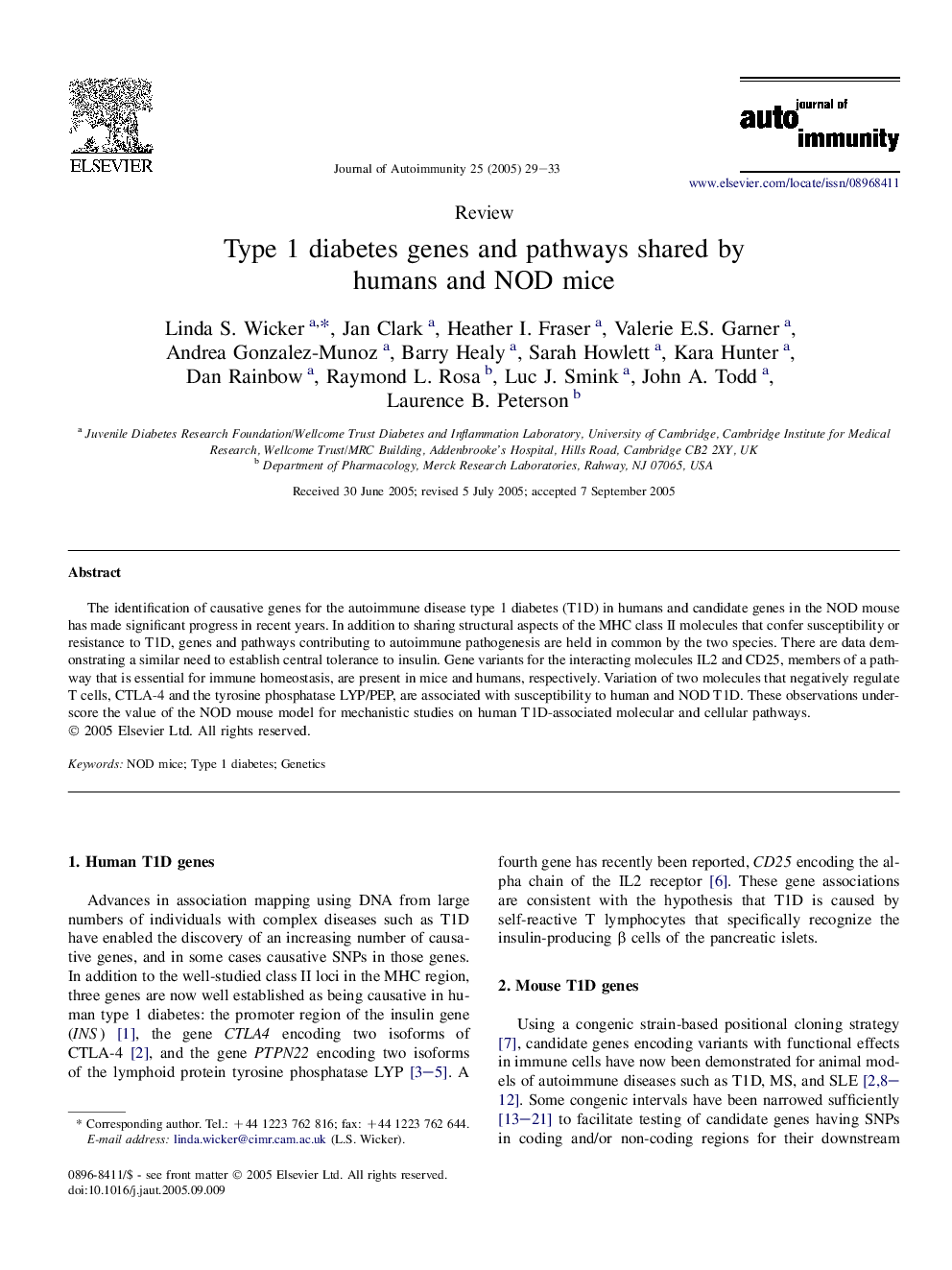| Article ID | Journal | Published Year | Pages | File Type |
|---|---|---|---|---|
| 9267844 | Journal of Autoimmunity | 2005 | 5 Pages |
Abstract
The identification of causative genes for the autoimmune disease type 1 diabetes (T1D) in humans and candidate genes in the NOD mouse has made significant progress in recent years. In addition to sharing structural aspects of the MHC class II molecules that confer susceptibility or resistance to T1D, genes and pathways contributing to autoimmune pathogenesis are held in common by the two species. There are data demonstrating a similar need to establish central tolerance to insulin. Gene variants for the interacting molecules IL2 and CD25, members of a pathway that is essential for immune homeostasis, are present in mice and humans, respectively. Variation of two molecules that negatively regulate T cells, CTLA-4 and the tyrosine phosphatase LYP/PEP, are associated with susceptibility to human and NOD T1D. These observations underscore the value of the NOD mouse model for mechanistic studies on human T1D-associated molecular and cellular pathways.
Keywords
Related Topics
Life Sciences
Immunology and Microbiology
Immunology
Authors
Linda S. Wicker, Jan Clark, Heather I. Fraser, Valerie E.S. Garner, Andrea Gonzalez-Munoz, Barry Healy, Sarah Howlett, Kara Hunter, Dan Rainbow, Raymond L. Rosa, Luc J. Smink, John A. Todd, Laurence B. Peterson,
